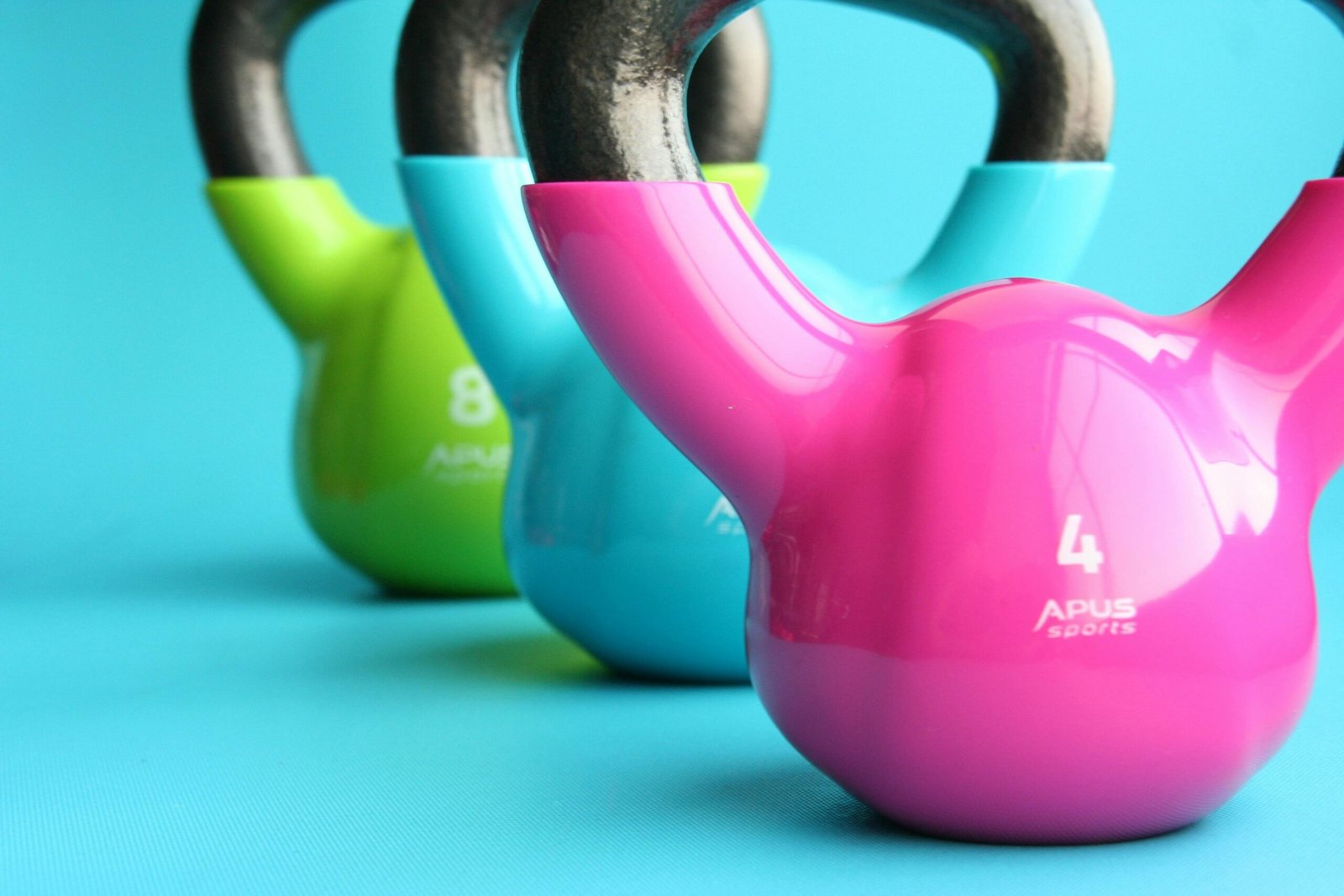Welcome to an exciting journey of creating a successful workout routine tailored just for you! In this article, you will learn all about how to design a workout plan that will help you achieve your fitness goals and maintain consistency. From setting realistic goals to incorporating a variety of exercises, we will guide you through the process of building a routine that will keep you motivated and on track for long-term success. Get ready to take your fitness journey to the next level! Have you ever felt overwhelmed when trying to create a workout routine that actually delivers consistent results? Let’s simplify the process for you and break down the key steps to designing a successful workout routine that you can stick with for the long haul.

This image is property of images.pexels.com.
Understanding Your Goals
When it comes to designing a workout routine that works for you, it’s crucial to first understand your fitness goals. Are you looking to lose weight, build muscle, increase endurance, or improve overall health? By clearly defining your goals, you can tailor your workout routine to achieve the results you desire. Think about what you want to accomplish and keep that in mind as you move forward in creating your plan.
Assessing Your Current Fitness Level
Before diving into a new workout routine, it’s important to assess your current fitness level. This will help you determine where you are starting from and what areas you need to focus on. Consider factors such as your strength, endurance, flexibility, and cardiovascular health. You can use simple tests like push-ups, sit-ups, running a mile, or measuring your flexibility to get a baseline of your current fitness level.

This image is property of images.pexels.com.
Choosing the Right Types of Exercises
When designing your workout routine, it’s essential to incorporate a variety of exercises that target different muscle groups and aspects of fitness. This includes cardiovascular exercises for endurance, strength training for muscle building, flexibility exercises for mobility, and balance exercises for stability. Choose exercises that align with your goals and preferences to keep your routine engaging and effective.
Cardiovascular Exercises
Cardiovascular exercises, also known as cardio, are essential for improving heart health, burning calories, and increasing stamina. Some popular cardio options include running, cycling, swimming, and dancing. Aim for at least 150 minutes of moderate-intensity cardio per week or 75 minutes of vigorous-intensity cardio per week for optimal results.
Strength Training Exercises
Strength training exercises are crucial for building muscle mass, increasing metabolism, and improving overall strength. Include a mix of compound exercises (targeting multiple muscle groups) and isolation exercises (targeting specific muscle groups) in your routine. Examples of strength training exercises include squats, deadlifts, push-ups, rows, and bicep curls.
Flexibility Exercises
Flexibility exercises are often overlooked but play a significant role in preventing injuries, improving range of motion, and enhancing performance. Incorporate stretching, yoga, or Pilates into your routine to improve flexibility and joint health. Focus on major muscle groups like hamstrings, quads, calves, back, and shoulders.
Balance Exercises
Balance exercises are essential for coordination, stability, and injury prevention. Include balance-focused movements like single-leg stands, stability ball exercises, or yoga poses to challenge your balance and core strength. These exercises can help improve posture, reduce the risk of falls, and enhance overall body awareness.
Structuring Your Workout Routine
Now that you have a good understanding of your goals, fitness level, and types of exercises to include, it’s time to structure your workout routine. This involves setting up a schedule, determining the frequency and duration of your workouts, and organizing your exercises in a logical sequence.
Setting Up a Schedule
Consider your daily commitments, preferences, and energy levels when setting up a workout schedule. Decide whether you prefer to work out in the morning, afternoon, or evening, and plan your workouts accordingly. Aim for consistency by scheduling your workouts on specific days and times each week to establish a routine.
Determining Frequency and Duration
The frequency and duration of your workouts will depend on your goals, fitness level, and availability. Generally, aim for at least 150 minutes of moderate-intensity cardio per week, along with two to three strength training sessions and regular flexibility and balance exercises. Start with shorter sessions and gradually increase the duration and intensity as your fitness improves.
Organizing Your Exercises
When organizing your exercises, consider factors like muscle groups, intensity, and rest periods. Begin your workout with a warm-up to prepare your body for exercise and finish with a cool-down to help with recovery. Alternate between cardiovascular, strength training, flexibility, and balance exercises to create a well-rounded routine that addresses all aspects of fitness.

This image is property of images.pexels.com.
Progressing Your Workout Routine
As you continue with your workout routine, it’s essential to track your progress, make adjustments, and challenge yourself to prevent plateaus and keep making gains. Progression is key to seeing consistent results and maintaining motivation in the long run.
Tracking Your Progress
Keep a workout journal or use a fitness tracking app to monitor your workouts, track your sets and reps, record your weights and times, and measure your progress over time. This will help you stay accountable, identify areas for improvement, and celebrate your achievements along the way.
Making Adjustments
Be open to making adjustments to your workout routine as needed based on your progress, feedback from your body, and changes in your goals. Increase the intensity of your workouts, add new exercises, modify your rest periods, or switch up your routine every few weeks to keep your body challenged and avoid boredom.
Challenging Yourself
To see continuous progress and prevent plateaus, challenge yourself by increasing the weight, reps, sets, or intensity of your workouts gradually. Incorporate advanced variations of exercises, try new workout formats, or set new goals to keep yourself motivated and engaged. Remember that growth happens outside of your comfort zone.
Staying Consistent and Motivated
Consistency is key when it comes to reaping the benefits of a workout routine and seeing long-term results. Finding ways to stay motivated, overcome obstacles, and maintain your enthusiasm for exercise will help you stay on track and achieve your fitness goals.
Setting Realistic Goals
Set realistic, achievable goals that are specific, measurable, attainable, relevant, and time-bound (SMART). Break down your goals into smaller milestones and celebrate your progress along the way to stay motivated and focused. Adjust your goals as needed based on your progress and changing circumstances.
Finding Accountability
Enlist the support of a workout buddy, hire a personal trainer, join a fitness class, or participate in a fitness challenge to hold yourself accountable and stay motivated. Surround yourself with like-minded individuals who share your fitness aspirations and can offer encouragement, advice, and support when needed.
Overcoming Obstacles
Identify potential obstacles that may hinder your consistency, such as lack of time, motivation, or resources, and come up with solutions to overcome them. Schedule your workouts in advance, prioritize self-care, set boundaries, and seek help from professionals or loved ones to help you stay committed to your fitness routine.
Staying Inspired
Stay inspired by following fitness influencers, reading motivational books, watching workout videos, listening to uplifting music, or engaging in activities that ignite your passion for exercise. Find what inspires you and incorporate it into your routine to keep your motivation levels high and your enthusiasm for fitness alive.
Conclusion
Designing a successful workout routine for consistent results doesn’t have to be complicated or overwhelming. By understanding your goals, assessing your fitness level, choosing the right exercises, structuring your routine, progressing over time, and staying consistent and motivated, you can create a workout plan that works for you and helps you achieve your fitness goals. Remember that consistency, dedication, and a positive mindset are the keys to long-term success in fitness. So, are you ready to design your own workout routine and start seeing consistent results? Let’s get started!
